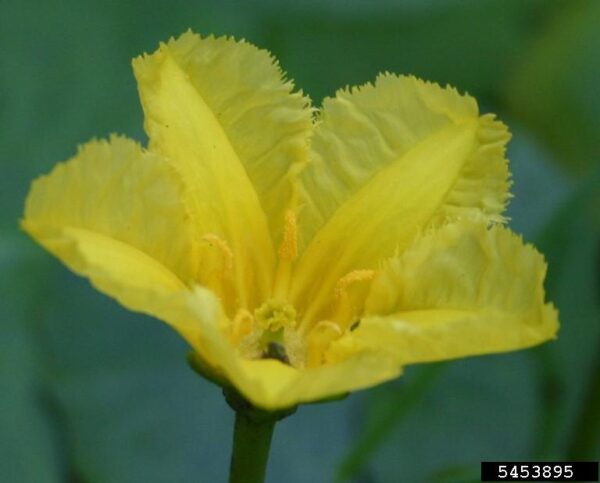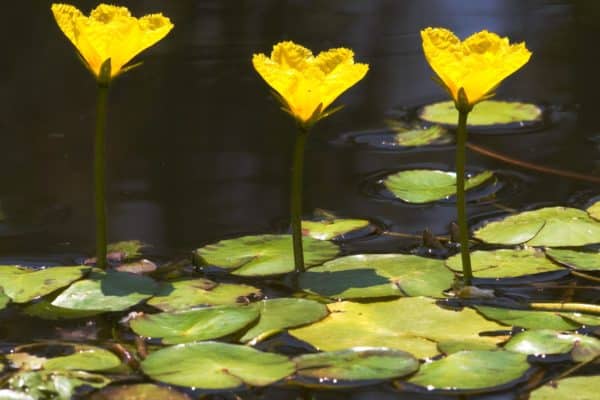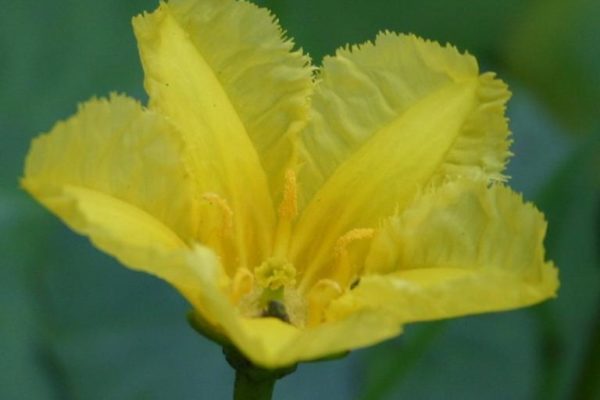Yellow floating heart
About This Species
Yellow floating heart (Water fringe, Fringed water lily, Entire marshwort) is an aquatic species that resembles water lily. It spreads both by seed and vegetatively making this species extremely difficult to control. It forms dense mats that impede water flow and disturbs sensitive aquatic habitats. It was initially used as an ornamental pond plant introduced from its native range of East Asia and the Mediterranean but has escaped cultivation and has the potential to cause major damage in BC. Yellow floating heart prefers depths of 0-4 m and slow-moving water. Yellow floating heart is designated as a Provincial EDRR species by the BC Provincial Priority Invasive Species List.
How to Identify
Yellow floating heart is a floating aquatic perennial species that resembles a water lily.
A single yellow flower appears on a stalk above the leaf. The fruit is a flattened, oval capsule that turns from green to brown as it matures and ripens.
Leaves are round, floating and 3-15 cm in diameter that sit on the surface of the water, typically found growing in dense mats.

Take Action
Prevention is the best approach.
-
If you need advice about invasive species on your property or you are concerned about reported invasives in your local area, contact your local government or regional invasive species organization.

Clean, Drain, Dry
Learn about best practices
The Clean Drain Dry program empowers you to help reduce the spread of invasive plants and organisms to BC waters by following the clean, drain, dry procedure on all watercraft and equipment.

Plantwise
Learn about best practices
A few non-invasive alternatives to plant instead of Yellow floating heart include:
- Yellow pondlily (Nuphar lutea subsp. polysepala)
REPORT TO PROTECT BC’S BIODIVERSITY

Use the app
Observe and report to protect BC’s biodiversity

Report through this website
Use our form to tell us what you’re seeing and where.




